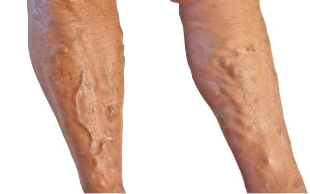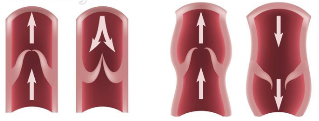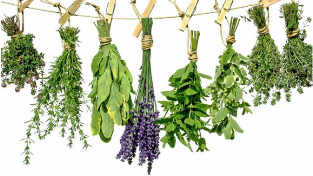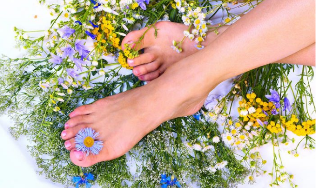Veins should be treated, not cut. Sounds tempting, right? Moreover, it is proposed to treat veins in the legs without the use of pharmaceuticals, only folk remedies. This method of treating varicose veins was developed by the Moscow practicing surgeon V. Karpov. The method is substantiated, consistent and confirmed by a huge number of positive results. The period for which the treatment and restoration of veins is calculated is 3. 5-4 months.

Violation of venous outflow is called varicose veins, and it refers to the so-called chronic venous insufficiency. In order to understand how varicose veins in the legs occur and how to treat it, let's remember (or find out) what the venous system of the lower extremities looks like.
Briefly about the venous system of the lower extremities
Veins - deep and subcutaneous - are located in the muscles and in the fatty subcutaneous tissue. Through them, blood moves towards the heart.
The direction of blood flow through the veins from bottom to top is provided by several systems, the work of which is clearly defined and coordinated. These are valves, muscles and perforating veins.
Valvesare dense, muscular valves that close, pushing blood upstream, and expand to fill with blood, preventing it from returning back. The greatest number of valves is concentrated in the lower parts of the legs, i. e. in the lower leg and foot. With age and lack of exercise, the number of valves decreases.

Calf musclesprovide significant help in valve function. By contracting and stretching, they create additional pressure on the blood vessels and help push blood upward. Since the saphenous veins are less supported by muscle work, they are the ones that most often suffer from deformities.
Communicative veins (perforating)connect the deep and superficial veins. They let blood pass only in one direction - from superficial to deep. It is an effective mechanism for relieving excess pressure in the superficial veins. The destruction of the valves in the perforating veins is fraught with diseases of the venous system and the appearance of trophic ulcers.
In a state of prolonged muscular inactivity, stagnant processes may appear in the legs. The weakened outflow of blood causes stretching of the vascular walls and disruption of the venous "pump" mechanism. This is how ugly, swollen, dark veins appear on the legs. This is varicose veins.
Causes of varicose veins
Doctors say that varicose veins are humanity's payment for upright walking. After all, animals do not have such a disease. Two factors - the movement of blood along the venous bed against the action of gravitational forces and the quality of venous blood, containing the products of decay and vital activity of cells, are always a potential threat of varicose veins.
The insidiousness of varicose enlargement is that the onset of the disease is impossible to notice. And when the signs appear in the form of small blue nets and swollen veins, then prevention no longer makes sense. Treatment required. Therefore, if you fall into the category of the following risk groups, it is imperative to be observed by a phlebologist.
You are at risk if:
- There have been cases of varicose veins in the family. This disease is often hereditary.
- Spend many hours in a sitting position without leaving the table.
- Work involves lifting and carrying weights.
- Every day, there is a prolonged static load on the legs (sellers, hairdressers).
- Always wear high heels.
- Suffer from flat feet.
- There are functional changes in the liver.
- Bowel disease, constipation.
- You are overweight.
In addition, due to their physiological characteristics, women are more susceptible to varicose veins than men.
Listen carefully to the sensations in the lower leg and foot. If periodically and systematically there are sensations of pain, burning, heat, itching, tingling, if night cramps, swelling began to appear, immediately undergo an examination by a specialist.

Treatment of varicose veins on the legs with folk remedies
Traditional medicine for many centuries has gained extensive experience in the treatment of varicose veins. In her arsenal there are herbal tinctures and decoctions, juices, ointments, compresses, rubbing, and special exercises. You can easily find recipes for their preparation and recommendations for use in large quantities on the Internet, in printed publications.
We want to bring to your attention a systematic approach to the treatment of varicose veins on the legs with folk remedies, developed by a surgeon. There is every reason to trust a specialist with fundamental medical education and solid work experience. Moreover, his statement “Veins should not be cut, but treated” looks very encouraging. The course of treatment and restoration of veins consists of four successive stages and is designed for 3. 5-4 months of daily procedures and exercises.
First, you need to make a rule for yourself:
- Every 40 minutes, from now on, make your leg muscles work. It is best to do 20-30 squats without loading the knee joints (the angle between the thigh and the lower leg is 90 °). This exercise will be useful for the knees, and even more so for the condition of the veins. If it is difficult to squat, start with 10 squats, with 5 as you master. Better yet, use a fitball for this. Stand against the wall, place the ball between the wall and the lower back. Leaning your back on the ball, do squats (the ball will gently roll up and down the back, repeating the trajectory of the torso). This will unload your back. Only legs will work.
- At least once every half hour, switch to diaphragmatic breathing for one or two minutes (inhalation - the stomach protrudes, exhalation - is drawn in). Duration of inhalation and exhalation from 2 to 4 seconds.
- Drink at least two liters of clean water in small portions (half a glass) throughout the day.
To cure the veins in the legs, you need to understand the causes of this disease. Those. the vein treatment is directly preceded by a preparatory period, which should not be neglected in any case. Otherwise, the treatment will not bring the desired results.
The preparatory period in the treatment of varicose veins on the legs
If you have flat feet, you will need a month of regular exercise to get rid of it. Violation of the foot structure leads to disruption of the leg muscles, which entails their tightness and rigidity. Accordingly, conditions appear for the occurrence of varicose veins. The easiest thing to do is squat deep every day, gradually increasing the number of squats. There are tons of other exercises you can do with the advice of a podiatrist.
If your liver is sick, follow the suggested guidelines. Take 2-3 weeks for 1 dessert spoon 2 times a day 15 minutes before meals an infusion of one of the herbs: immortelle, milk thistle, yarrow. (Boil one tablespoon of the herb in 250 ml of water for 3-5 minutes over low heat).
In parallel, it is possible (and even necessary) to make "cold" compresses on the liver area. Apply a towel soaked in cold water several times a day for 15 minutes. There will be no harm if you add salt (not iodized) to the water for moistening, at the rate of one tablespoon per liter of water.
It is necessary to approach liver health very responsibly. You should understand that blood viscosity directly depends on the condition of the liver, and viscous blood is one of the main causes of varicose veins.
If there are constipation and intestinal problems, it is useless to start treatment of varicose veins without solving them. Massage your abdomen clockwise for 3-5 minutes every morning while lying on your back (your legs should be bent at the knees).
Be sure to drink a glass of hot (within reasonable limits) water in the morning, on an empty stomach, in small sips. Then you can drink 1-3 tablespoons of unrefined, cold-pressed vegetable oil (sunflower, linseed, olive, pumpkin, etc. )
Review your diet, introduce bran, dairy products, vegetable juices.
If the skin on the legs is dry, you should pay attention to it too. Why? For the reason that the treatment of veins in the legs involves the penetration of medicinal infusions through the pores of the skin. That is why the skin on the legs must be firm and healthy. Throughout the preparatory period, along with taking care of the liver and intestines, it is necessary to take care of the legs, rubbing the following mixture: sea buckthorn and olive oils, aloe juice in equal proportions. In the morning and in the evening, rub into the skin of the legs, paying special attention to the affected areas.
If you cannot determine whether you have the above violations, then within two weeks arrange for yourself a preparatory purification period and follow all the recommendations.
Take 2 teaspoons of apple cider vinegar per 100 g of water twice a day throughout the treatment. And also to thin the blood, drink Escuzan 1 capsule, 3 times a day, 1 hour after meals, with a glass of water (Excusan - horse chestnut extract).
Anti-inflammatory measures - the second stage of varicose veins treatment

At the second stage of the treatment of varicose veins on the lower extremities, therapeutic anti-inflammatory procedures are carried out. It is necessary to prepare herbal balm.
Ingredients:
- plantain
- yarrow
- chamomile
- sage
- St. John's wort
Preparation:
Mix the herbs in equal proportions. Pour two tablespoons of the collection with two glasses of cold water, bring to a boil. Simmer for 3-5 minutes over low heat. Cover and let it brew to room temperature. Strain the cooled infusion.
With the resulting broth, you will need to apply applications to the injured limbs. To do this, prepare a piece of gauze in 4-6 layers of such a size that you can wrap the leg from heel to groin (gauze is folded in 4 layers for the elderly, in 6 for young people). You will also need compress paper (if you use cellophane instead of paper, make holes in it to allow air to flow), and you will need a cotton stocking.
Heated the broth to 37 ° C, moisten the gauze and bandage the leg, as mentioned above, - from the foot to the groin, put paper or cellophane on top, put on a stocking. Wash your leg with laundry soap. Toilet soaps and gels leave a thin film on the skin, preventing the penetration of essential substances. The duration of the procedure is until the gauze dries. Usually it takes about two hours, but in addition you need to lie down for an hour and a half for the medicine to be absorbed (total - 3. 5-4 hours). After removing the bandage, rinse your leg in warm water, wash and dry the gauze.
If the veins on both legs are damaged, then the procedures should be carried out alternately - a day - on one leg, a day - on the other. At the same time, we simply rub one leg with balm, and put a compress on the other.
The frequency of applying the balm application is two during the day and one at night. If you are limited in time, then during the day you can only rub in the balm twice, and at night - the application.
Between procedures, do exercises - "Lowering on the heels", "Vibration". These exercises will restore the tone of the saphenous veins.
Exercise "Down on the heels". Stand up straight, rise on tiptoes, hold this position for 10 seconds, drop sharply on your heels. Place a cushion under your heels to cushion the impact. Do 30 drops 3 times a day.
Exercise "Vibration". Starting position - basic stance, body relaxed. Begin with small, light and quick, alternate tapping with your heels, without lifting your feet from the floor. Get vibration in your calf muscles. Continuing tapping with your heels, raise the vibration to your hips, then to your stomach, gluteal muscles, chest, shoulders, head. "Vibrate" for a minute.
After 3-4 weeks, if the pain is gone, take a break for 2-3 days and move on to the next step.
Stage three - restoration of thinned venous walls
At this stage, we will use a "thickening" balm to heal the veins, thicken the thinned walls.
Ingredients:
- oak bark
- acorns
- white willow bark
- horse chestnut
All ingredients are taken in equal parts. Two tablespoons of the mixture are poured into two glasses of water and simmer for 10-15 minutes. Insist, strain. Use exactly the same and on the same schedule as the previous anti-inflammatory balm.
The fourth stage is nutritious

We consolidate what has been achieved, restore the elasticity of the blood vessels, continue to restore the thinned walls of the veins.
For these purposes, we use an apple bite diluted with water. Moreover, 4% vinegar is diluted in a 1: 1 ratio, 6% - 1: 2, 9% - 1: 3.
We rub the solution into the vein gently, without excessive pressure, in a circular motion directed from bottom to top.
The scheme is as follows:
- The first two weeks - rub in only vinegar.
- The second two weeks - add 50 g of natural non-pasteurized honey to 1 liter of vinegar.
- The third two weeks - for 1 liter of apple cider vinegar - 100 g of honey.
As you can see, in this course everything is deliberate, logical and consistent. It seems to us that this approach is more preferable than the not entirely justified, according to the advice from the Internet, the use of ointments, rubbing, etc. All treatment should take 3. 5-4 months. You will have to work hard and give yourself the proper attention. But on the other hand, you will not only avoid surgery, but also completely restore your veins.












































